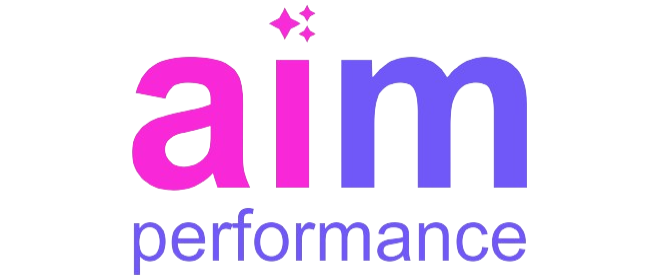Performance management is not just a tool for assessing employee performance; it is a powerful mechanism for enhancing decision-making across various workforce segments. Whether dealing with white-collar, grey-collar, or blue-collar workforce, the implementation of a robust performance management system can lead to more informed and effective decisions. This article explores how performance management contributes to enhanced decision-making within different workforce categories.
Understanding the Role of Performance Management in Decision-Making
Performance management plays a pivotal role in shaping organizational strategies and operations. By systematically collecting and analyzing performance data, organizations can make decisions grounded in empirical evidence rather than intuition or assumption. This data-driven approach ensures that decisions are aligned with the company’s goals and the specific needs of its workforce.
In white-collar environments, where decisions often involve complex problem-solving and strategic planning, performance management provides the insights needed to align employee capabilities with organizational objectives. For the grey-collar workforce, who may split their time between desk jobs and fieldwork, performance management offers a balanced view of their multifaceted roles. Blue-collar workforce, on the other hand, benefit from performance management systems that track their productivity and skill development, leading to better operational decisions.
White-Collar Workforce: Precision in Strategic Decision-Making
For the white-collar workforce, decision-making often involves high-level strategy, innovation, and resource allocation. Performance management systems tailored to this group focus on competencies like critical thinking, leadership, and project management. These systems enable organizations to identify high performers who can drive strategic initiatives and guide teams towards achieving long-term goals.
Moreover, performance management helps in succession planning by highlighting potential leaders within the organization. By analyzing performance trends, companies can make informed decisions about promotions and role changes, ensuring that the right individuals are in the right positions to steer the company forward.
Grey-Collar Workforce: Bridging Operational and Strategic Decisions
The grey-collar workforce operates at the intersection of strategy and operations. These workforces often juggle responsibilities that require both technical skills and management acumen. Performance management systems that cater to this group must be versatile, capturing both the qualitative and quantitative aspects of their roles.
Enhanced decision-making for grey-collar workforce involves evaluating their efficiency in executing tasks and their ability to adapt to changing environments. Performance management tools provide insights into areas where additional training might be needed, allowing organizations to make proactive decisions about professional development and resource allocation.
Blue-Collar Workforce: Optimizing Operational Decisions
In blue-collar settings, decision-making is closely tied to operational efficiency and productivity. Performance management systems for blue-collar workforce focus on metrics such as output quality, adherence to safety protocols, and time management. By continuously monitoring these metrics, organizations can identify trends that may require intervention, such as the need for updated equipment or changes in workflow processes.
Performance management also plays a critical role in workforce planning for blue-collar workforce. Decisions regarding shift scheduling, task assignments, and even hiring can be optimized by leveraging data from performance management systems, ensuring that the workforce is deployed in the most effective manner.
Leveraging Performance Data for Organizational Decisions
The data generated by performance management systems is a goldmine for organizational decision-making. When aggregated and analyzed, this data can reveal patterns and trends that might not be apparent at the individual level. For example, if multiple teams within a department are consistently underperforming, it could indicate a systemic issue that requires a strategic decision, such as restructuring or additional training.
Organizations can also use performance data to make informed decisions about resource allocation. By understanding which departments or projects are yielding the highest returns on investment, companies can channel their resources more effectively, driving overall business success.
The Impact of Continuous Feedback on Decision-Making
Continuous feedback is a cornerstone of modern performance management systems. By providing regular, constructive feedback, organizations can create a culture of continuous improvement, which is essential for making informed decisions. For white-collar workforce, continuous feedback helps refine their strategic thinking and problem-solving skills. Grey-collar workforce benefit from feedback that enhances their dual roles, while blue-collar workforce can improve their operational efficiency.
This ongoing exchange of feedback not only improves individual performance but also feeds into the broader decision-making process. Managers can make real-time adjustments based on the latest performance data, leading to more agile and responsive decision-making.
Performance Management and Risk Mitigation in Decision-Making
Risk mitigation is a critical aspect of decision-making in any organization. Performance management systems contribute to risk mitigation by identifying potential issues before they escalate. For instance, if a particular process consistently leads to errors or delays, performance data can highlight this issue early, allowing management to take corrective action.
In the context of a multi-collar workforce, performance management systems can help mitigate risks by ensuring that employees at all levels are performing at their best. This proactive approach to performance monitoring reduces the likelihood of costly mistakes and enhances overall organizational stability.
Aligning Workforce Performance with Business Goals
One of the most significant benefits of performance management is its ability to align individual performance with broader business goals. By setting clear expectations and regularly reviewing progress, organizations can ensure that their workforce is working towards common objectives. This alignment is particularly important in decision-making, as it ensures that all decisions, from strategic planning to daily operations, are geared towards achieving the company’s long-term vision.
For the white-collar workforce, this might involve aligning their project outcomes with the company’s strategic initiatives. For grey-collar workforce, it could mean ensuring that their dual roles contribute to both operational efficiency and strategic growth. For blue-collar workforce, alignment might focus on meeting productivity targets that support overall business profitability.
The Future of Decision-Making with Performance Management
As performance management systems continue to evolve, their role in decision-making will only become more prominent. Advances in technology, such as artificial intelligence and machine learning, are already enhancing the capabilities of performance management tools, allowing for more precise and predictive decision-making.
In the future, organizations will be able to make decisions with unprecedented accuracy, thanks to the integration of advanced performance management systems. These systems will not only provide real-time insights but also offer predictive analytics that can forecast potential outcomes based on current performance trends. This will be particularly beneficial in managing a multi-collar workforce, where the complexity of roles and responsibilities requires nuanced and well-informed decision-making.
Conclusion: Empowering Decisions Through Performance Management
In conclusion, performance management is a vital tool for enhancing decision-making across all segments of the workforce—white-collar, grey-collar, and blue-collar. By providing actionable insights and data-driven feedback, performance management systems empower organizations to make informed decisions that drive success. Whether it’s strategic planning for white-collar professionals, optimizing operations for grey-collar workforce, or improving productivity among blue-collar employees, the benefits of performance management are undeniable.
As businesses continue to evolve, the integration of advanced performance management systems will become increasingly important. These systems will not only support current decision-making processes but also pave the way for more predictive and proactive management strategies. Ultimately, performance management will remain a cornerstone of organizational success, ensuring that every decision is made with precision, confidence, and a clear alignment with business goals.











